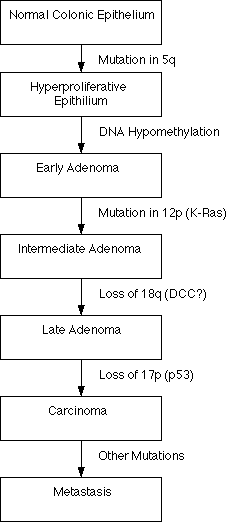Case Studies and Project Ideas: Colorectal Cancer



(Diagram from Hargrove 264)
dI/dt = N*i + I*n + I*p - I*f
dJ/dt = I*p + J*q - J*c - J*g
dM/dt = J*c + M*m - M*h
N = Normal cells
I = Intermediate Cells 1
J = Intermediate Cells 2
M = Malignant Cells
a = rate of normal cell division
i = initiation
d = death rate of normal cells
n = Mitosis I rate
p = rate of promotion
f = death rate of intermediate cells 1
g = Mitosis II rate
m = Mitosis rate (malignant cells)
h = death rate of malignant cells
i = .107
d = 99.893
n = 2
p = .307
f = 1
g = 2
c = .1
g = 2
m = 6
h = 4
 The Shodor
Education Foundation, Inc.
The Shodor
Education Foundation, Inc.